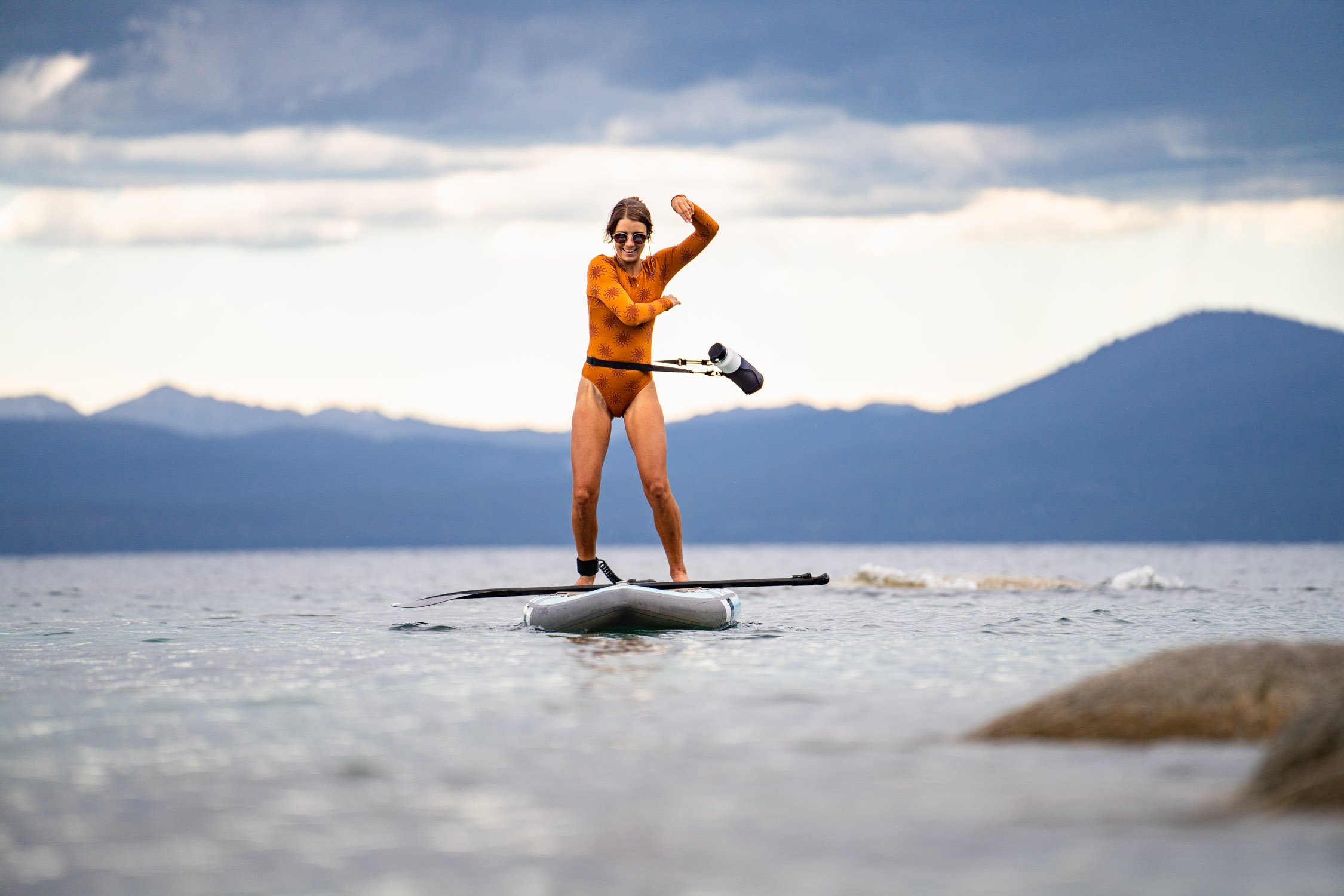Experience Arches National Park Like a Local Adventurer
Arches National Park, a land sculpted by wind and time, is a natural wonderland that beckons adventurers from around the globe. With over 2,000 natural stone arches, towering pinnacles, and massive rock fins, this iconic park in Utah offers a playground for those who crave the thrill of exploration. Whether you’re navigating the park’s rugged trails, capturing the perfect sunrise shot, or climbing the red rock formations, Arches provides endless opportunities to connect with the raw beauty of the American Southwest. This guide will show you how to experience Arches National Park like a local adventurer, uncovering the top outdoor activities and hidden gems that make this place truly special.
Canyoneering in Arches National Park. Photo by Dalton Johnson
Why an Adventure Traveler Should Visit Arches National Park
Arches National Park isn’t just about seeing the sights—it’s about immersing yourself in a landscape that feels both ancient and alive. For adventure travelers, this park offers a unique blend of challenge and reward. The park’s natural formations, carved by millions of years of geological activity, create a dramatic backdrop for outdoor pursuits. Whether you’re hiking through desert terrain, scaling sandstone walls, or navigating narrow canyons, Arches offers experiences that push your limits and deepen your appreciation for the natural world.
One of the park’s greatest appeals is its accessibility. While it’s home to some of the most stunning natural features in the U.S., Arches is relatively compact, making it easy to explore multiple areas in a single trip. Adventure travelers will find a variety of trails and activities that cater to all skill levels, from easy walks to challenging climbs. Plus, with its close proximity to Moab—a hub for outdoor enthusiasts—you can easily combine your visit with other adventure-filled activities in the region.
Top Adventures You Don't Want to Miss
Hiking
Delicate Arch: The most famous arch in the park, Delicate Arch is a must-see for any visitor. The 3-mile round-trip hike is moderately strenuous, with a steep uphill section, but the view at the end is worth every step. The arch stands alone on a red rock bluff, framing the distant La Sal Mountains—a perfect spot for sunrise or sunset.
The Devil’s Garden Trail: For those seeking a more challenging adventure, the Devil’s Garden Trail offers a longer hike with the opportunity to see multiple arches, including Landscape Arch, the longest natural arch in North America. The full loop is about 7.8 miles and includes some rock scrambling, making it ideal for experienced hikers looking to explore the park’s more remote areas.
Park Avenue: This easy 2-mile round-trip hike takes you through a canyon flanked by towering rock formations that resemble a city skyline, hence the name “Park Avenue.” It’s a great option for a quick hike with stunning scenery.
Rock Climbing
The Three Penguins: Located near the park entrance, these towering rock formations offer some of the best climbing in Arches. The routes here range from beginner to advanced, providing options for climbers of all levels. The sandstone spires are a classic challenge and offer panoramic views of the surrounding desert.
The Owl: This lesser-known climbing spot offers a more secluded experience. The climb is a bit more technical, but the effort is rewarded with breathtaking views and the satisfaction of conquering one of the park’s unique formations.
Stargazing
Windows Section: Arches National Park is a designated International Dark Sky Park, making it one of the best places in the country for stargazing. The Windows Section, with its expansive views and minimal light pollution, is a prime spot for setting up a telescope or simply lying back and enjoying the night sky. On a clear night, you can see the Milky Way stretching across the horizon.
Panorama Point: Another excellent stargazing location, Panorama Point offers unobstructed views of the sky. It’s also a great place to catch a meteor shower or watch the moon rise over the distant peaks.
Delicate Arch: For a truly unforgettable experience, hike to Delicate Arch after dark. The arch, illuminated by the glow of the stars, creates a surreal and awe-inspiring scene. Just be sure to bring a headlamp for the hike back down!
Camping
Devils Garden Campground: The only campground within Arches National Park, Devils Garden offers 51 sites surrounded by stunning scenery. Staying here allows you to experience the park’s beauty in a more intimate way, with the added bonus of being able to explore the trails early in the morning or late in the evening, when the crowds are thin. The campground is particularly popular, so reservations are highly recommended.
Backcountry Camping: For those seeking solitude, backcountry camping in Arches is an option, though it requires a permit. The park’s rugged backcountry offers a more challenging experience, with opportunities to discover less-visited areas and enjoy the silence of the desert night.
Dispersed Camping Near Moab: If you prefer a more flexible camping experience, there are numerous dispersed camping areas on BLM land near Moab. These spots offer a true wilderness experience, often with fewer amenities but more freedom to choose your perfect campsite.
Canyoneering
Fiery Furnace: Canyoneering in the Fiery Furnace is one of the most unique and exhilarating experiences in Arches National Park. This labyrinth of narrow canyons and towering sandstone fins offers an adventure unlike any other. Navigating through the Fiery Furnace requires a permit or a guided tour, as the maze-like terrain can be challenging. Expect to scramble, squeeze through tight spaces, and explore hidden corners that few visitors ever see.
Lost Spring Canyon: Located in the northern part of the park, Lost Spring Canyon offers a quieter canyoneering experience. The slot canyon features narrow passages, beautiful rock formations, and the chance to see desert wildlife. It’s an off-the-beaten-path adventure that rewards those willing to explore the lesser-known areas of Arches.
Flat Water Kayaking and SUP
Colorado River: While not technically within the park, the Colorado River runs just outside Arches and offers excellent opportunities for flat-water kayaking and stand-up paddleboarding (SUP). Launch from the Moab Boat Ramp and paddle through the stunning scenery of the Moab Valley, with views of towering red cliffs and desert landscapes. This stretch of the river is relatively calm, making it perfect for beginners or those looking for a relaxing adventure on the water.
Ken’s Lake: A bit further afield but still worth the trip, Ken’s Lake provides a tranquil setting for kayaking and SUP. Surrounded by the La Sal Mountains, this lake is a peaceful retreat where you can paddle at your own pace and enjoy the serene environment.
Backpacking
Salt Valley Road to Tower Arch: For an overnight adventure, consider backpacking from Salt Valley Road to Tower Arch. This 7-mile route offers a mix of challenging terrain and stunning vistas, culminating in the impressive Tower Arch, one of the park’s hidden gems. The area around Tower Arch is often less crowded, providing a more solitary experience where you can truly connect with the wilderness.
Klondike Bluffs: Another fantastic backpacking option is the Klondike Bluffs area. This region of the park sees fewer visitors, offering a more remote and wild experience. The trails here wind through rocky bluffs, offering stunning views of the surrounding landscape, and the chance to see dinosaur tracks embedded in the rock.
Other Highlights of the Area
Places to Eat
The Broken Oar: A local favorite, The Broken Oar offers hearty American cuisine perfect for refueling after a day of adventure. Their patio dining area is a great spot to relax and enjoy the evening.
Moab Brewery: For those who enjoy a craft beer after a long day on the trails, Moab Brewery is the place to be. With a range of locally brewed beers and a menu filled with comfort food classics, it’s a great spot to unwind.
Must-See Spots
Dead Horse Point State Park: Just a short drive from Arches, Dead Horse Point offers some of the most breathtaking views in the region. The overlook provides a panoramic view of the Colorado River and the vast canyons below.
Canyonlands National Park: While Arches is known for its arches, nearby Canyonlands National Park offers a different kind of adventure with its vast canyons and mesas. The Island in the Sky district, in particular, is known for its stunning overlooks and challenging hikes.
Photo Locations
Delicate Arch: No trip to Arches is complete without a photo of Delicate Arch. The arch is particularly stunning at sunrise and sunset when the light makes the red rock glow.
The Windows Section: This area of the park is home to several arches that are perfect for photography, including the North and South Window Arches.
Best Sunset Locations
Panorama Point: As the name suggests, Panorama Point offers expansive views of the park, making it an ideal spot for watching the sunset.
Balanced Rock: This iconic formation is another great spot to catch the sunset, as the golden light casts dramatic shadows on the rock.
Cultural Highlights
Moab Museum: To get a deeper understanding of the area’s history, visit the Moab Museum, where you can learn about the region’s Native American heritage, early settlers, and the development of outdoor recreation.
The Milky Way passing through Landscape Arch in Arches National Park. Photo by Dalton Johnson
Arches National Park is more than just a collection of stunning rock formations—it’s a destination that invites you to challenge yourself, explore new terrains, and connect with nature in a profound way. Whether you’re hiking to iconic arches, scaling sandstone walls, or navigating the park’s canyons and trails, every moment in Arches is an adventure waiting to happen. The park’s accessibility, combined with its awe-inspiring beauty, makes it a must-visit for any outdoor enthusiast. Beyond the arches and the red rock landscape, the nearby areas of Moab and Canyonlands offer even more opportunities to extend your adventure, ensuring that your time in this remarkable part of Utah is nothing short of unforgettable.









